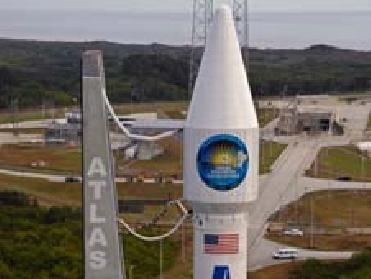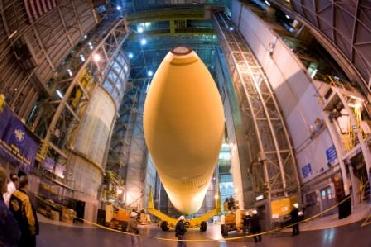
A United Launch Alliance Atlas V with NASA's Solar Dynamics Observatory satellite rolls out to the Space Launch Complex 41 launch pad. NASA photo
CAPE CANAVERAL (AFP): NASA has made final preparations for the launch of its Solar Dynamics Observatory (SDO) which promises to give space scientists the most detailed glimpse ever of our sun and its complicated workings.
The observatory and its Atlas V rocket were rolled out to the launch pad at Florida's Cape Canaveral base for a 1526 GMT lift-off today on a five year mission that scientists said would help unravel the mysteries of how the sun's magnetic field affects the rest of our solar system.
US scientists, who have targeted the sun as the next frontier for space research, said they hope the probe will be especially helpful in revealing how changes in the sun alter the levels of radiation and energy within our solar system.
Those changes, which scientists call space weather, can affect communications and satellite signals, electrical power lines, and other objects and energy transmissions in our atmosphere and beyond.
NASA said that there was a 40 per cent chance that cloudy and windy conditions, as well as threatening showers, could cause a delay in the lift - off today.
Telescopes and other gear onboard the probe will scrutinize sunspots and solar flares using more pixels and colours than any other observatory in the history of solar physics.
"SDO is the cornerstone, the foundation mission for the next decade of solar research," said Richard Fisher, heliophysics division director at NASA.
It will take continuous high definition images of the sun, transmitting the data back to Earth for processing.
 Previous Article
Previous Article Next Article
Next Article













The Indian Air Force, in its flight trials evaluation report submitted before the Defence Ministry l..
view articleAn insight into the Medium Multi-Role Combat Aircraft competition...
view articleSky enthusiasts can now spot the International Space Station (ISS) commanded by Indian-American astr..
view article